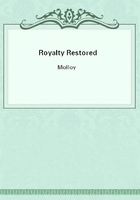
第121章 CHAPTER XX.(4)
The riding-habit, first introduced in 1664 caused considerable notice, and no small amount of mirth. The garb, as it was called, consisted of a doublet buttoned up the breast, a coat with long skirts, a periwig and tall hat, so that women clad in this fashion might be mistaken for men, if it were not for the petticoat which dragged under the coat. At the commencement of the reign, ladies of the court wore their hair after the French fashion, cut short in front and frizzed upon the forehead. When the queen arrived, her hair was arranged A LA NEGLIGENCE, a mode declared mighty pretty; but presently a fashion came in vogue of wearing "false locks set on wyres to make them stand at a distance from the head; as fardingales made the clothes stand out in Queen Elizabeth's reign." Painting the face, which had been practised during the Commonwealth, became fashionable; as did likewise the use of patches and vizards or masks; which from the convenience they afforded wearers whilst witnessing an immoral play, or conducting a delicate intrigue, came greatly into use.
According to Randal Holmes's notes on dress, in the Harleian Library, the male costume at the restoration consisted of "a short-waisted doublet, and petticoat breeches--the lining, being lower than the breeches, is tied above the knees. The breeches are ornamented with ribands up to the pocket, and half their breadth upon the thigh; the waistband is set about with ribands, and the shirt hanging out over them." This dress gradually increased in richness and ornamentation: the doublet and breeches being changed from cloth to velvet and satin, the hat trimmed with plumes of gay feathers, and the neck adorned with bands of cambric, trimmed with Flanders and Brussels lace. The perfection and costliness to which the costume eventually reached is best shown by a description of Sir Richard Fanshaw ambassador of the king, as presented in the diary of his spouse. "Sir Richard was dressed," she writes, "in a very rich suit of clothes of a dark FILLEMONTE brocade, laced with silver and gold lace--nine laces--every one as broad as my hand, and a little silver and gold lace laid between them, both of very curious workmanship; his suit was trimmed with scarlet taffety ribbon;his stockings of white silk upon long scarlet silk ones; his shoes black, with scarlet shoestrings and gaiters; his linen very fine, laced with rich Flanders lace; a black beaver buttoned on the left side with a jewel of twelve hundred pounds' value, a rich curious wrought gold chain, made in the Indies at which hung the king his master's picture, richly set with diamonds; on his fingers he wore two rich rings; his gloves trimmed with the same ribbon as his clothes."The uttermost extravagance and luxury in dress now obtained;indeed, to such a passion and pride did it reach that the monarch resolved on giving it some check by inventing a suit of plainer pretensions, which should become the national costume, and admit no change.
This determination he solemnly declared to his council in October, 1666, and on the 14th of the month appeared clad in a long vest slashed with white silk, reaching the knee, having the sword girt over it, a loose coat, straight Spanish breeches ruffled with black ribbons, and buskins instead of shoes and stockings. Though the habit was pronounced decent and becoming to his majesty, and was quickly adopted by the courtiers, there were those amongst his friends who offered him a wager he would not persist in wearing it long. At this the king stated his resolution afresh of never changing; but before the month was out he had made an alteration, for inasmuch as the vest being slashed with white, was said by a wag to make the wearers look like magpies, his majesty changed the colour of the silk to black.
This "manly and comely habit" might have become permanently the fashion, if the King of France, by way of ridiculing the merry monarch, had not caused his footmen to be clad in like manner.
Therefore, in less than two years, this mode gave place to others more fantastical. The vest was retained, but the shape and material were altered; the surcoat of cloth was discarded for velvet and rich plush, adorned with buckles of precious stones and chains of gold; the Spanish leather boots were laid aside for high-heeled shoes with rosettes and silver buckles. Towards the close of the reign the costume became much plainer. Through all these varying fashions the periwig, introduced in 1663, held its own, increasing in length and luxuriance with time. On its first coming into general use, the clergy had cried out against it as ministering to the vanity and extravagance of the age; but in a while many of them adopted its use, for, as Granger remarks, "it was observed that a periwig procured many persons a respect and even veneration which they mere strangers to before, and to which they had not the least claim from their personal merit."Amongst other strange innovations and various improvements known in this reign, the introduction of a penny post may be considered the most useful. King James I., of happy memory, had, in imitation of like regulations in other countries, established a general post for foreign parts; King Charles I. had given orders to Thomas Witherings, Esquire, his postmaster-general, to settle "a running post or two, to run night and day between Edinburgh, in Scotland, and the city of London, to go thither and back in six days;" but the organization of a penny post, for the conveyance of letters and parcels throughout the capital and suburbs, was reserved for the reign of the merry monarch. This beneficial scheme was originated by an upholsterer named Murray, who communicated it to one William Dockwra, a man who for over ten years had laboured with fidelity in the Custom House.